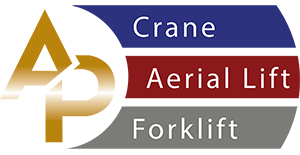
OSHA estimates that 35,000 serious injuries and also 62,000 non-serious injuries involving forklifts occur yearly. Further, the data from the Bureau of Labor Statistics demonstrates 96 U.S. workers were killed in incidents involving forklifts from 2015.
Our complete OSHA forklift training compliance program guarantees that your personnel is up to date on the most recent safety rules and practices, promoting a culture of compliance and reducing workplace risks.
A few basic safety tips from All Purpose Crane Training says that workers without proper training and knowledge of forklift operation, in addition to operators that move forklifts carelessly, have an increased probability of death or injury.
1 Train for safety
A commitment to safety begins with good training. The guide further says that "an unskilled forklift operator can be as dangerous being an undercover driver of a motor vehicle." OSHA's Powered Industrial Trucks Standard -- 29 CFR 1910.178 -- demonstrates that "the employer will ensure that each powered industrial truck operator is competent to operate a powered industrial truck safely, as demonstrated by the successful conclusion of their training and evaluation" outlined at the standard.
2 Perform checkups
Operators are recommended to inspect forklifts before each project, assessing first the items that can be monitored with no engine running. Checkpoints will incorporate backup alarms, tires, lights, horn, brakes, seat belts and fluid ranges, in addition to the load-supporting and moving portions of the forklift.
3 Know the machines -- and the rules
This may seem basic to some but nonetheless is crucial to encouraging driver, worker, and bystander safety: Although elevator trucks and personal vehicles share a few similarities, they eventually are quite different.
Among the gaps:
Open structure; motorist isn't completely enclosed
Weights ranging from 9,000 to 30,000 pounds, with rough-terrain lift trucks at the heavier end
travel speeds of less than 20 mph, closer to a walking pace
three-point suspension
more inclined to leaning over -- wealthy or not -- and varying stability
Tighter turning radius for operating in tight spots
NSC recommends operators to always wear seat belts. Failing to do this may lead to an operator in the event the vehicle turns over, resulting in a serious accident or fatality to become emptied from the forklift cage.
An operator consistently ought to be aware of their surroundings on the job site, as the environment or load may block visibility.
Evans stresses the importance of drivers being aware of and making eye contact with, pedestrians or other workers throughout operating. OSHA finest practices for maintaining visibility include:
Maintain a definite view.
Always look in the direction of travel.
Use spotters or aids like rear-view mirrors to enhance visibility.
Use headlights if working at night, in or outside areas in which additional light could improve visibility. OSHA requires forklifts to be equipped with headlights when illumination is less than 2 lumens per square foot.
4 Know the 'equilibrium triangle
An unloaded lift truck's center of gravity -- where the weight has equal immersion -- normally is greater than that of a personal vehicle. The strain includes its own center of gravity, and a combined center of gravity between the truck and your load is established once it's found.
Lift trucks are built on three-point suspension systems, the physics of that resemble a triangle. Support points lie with the other located in the middle of the rear axle, in the ends of the axle. This creates a "stability triangle" that operators must stay within once the truck is in motion.
Several things can cause a lift truck to either vacate the equilibrium triangle, including shaky, thick, broad or raised loads; fast starts and ceases; taking corners too quickly; and demanding terrain.
All Purpose Forklift Training offers several Pointers to Help prevent forklifts from tipping over:
Ahead of operation, ensure a load is completely stable and secured to the forks.
Keep heaps low on the earth throughout the operation.
Keep loads up the hill when climbing or descending an incline.
Drive slowly in wet or slippery conditions.
Melts down throughout endings, and honk the horn upon decreasing traffic.
5 Know about load basics
OSHA guides operators to check heaps before picking up them with all the forks, ensuring that the load's equilibrium and measurements will allow for safe transport. Move before the strain before forcing them below force and then move the pliers so far as you can. Be sure you, not overload and that the strain is centered.
Slightly tilt the forklift mast backward before lifting. Lift the strain enough to clean a floor or stand. OSHA recommends lifting the strain for piling up.
Be certain that the region is safe and flat, and don't place heavy loads on top of types. Lower the forks and then straight back the forklift away. As always, ensure the strain remains stable.
Latest Forklift Certification for the following Forklift Types
